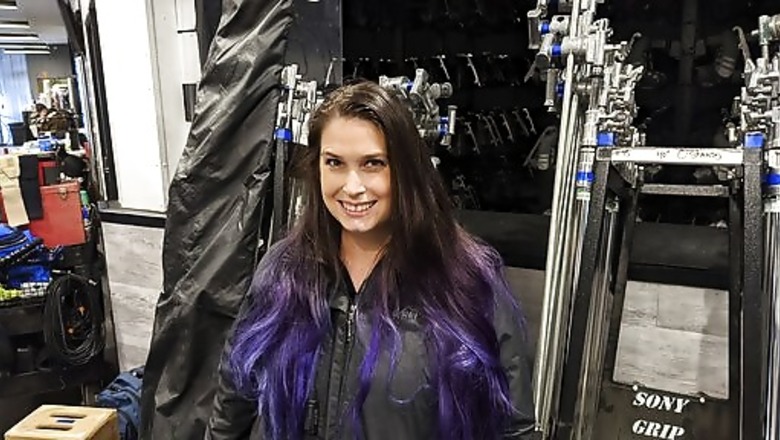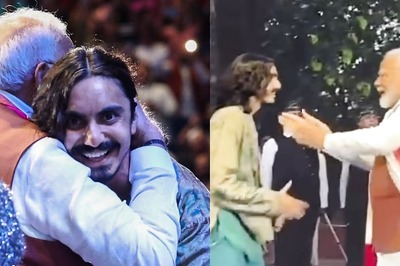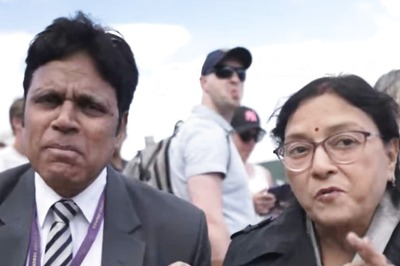
views
LOS ANGELES: In weighing his vote on a proposed union contract with Hollywood producers, veteran stagehand Matthew Doc Brashear looked closely at the agreement and beyond, to the now-closed New Mexico film set where a cinematographer died.
For crew member Brandy Tannahill, the fatal Rust shooting of Halyna Hutchins and the resurgence of labor actions, such as the strikes at John Deere and Kellogg, are bolstering her decision.
When voting starts Friday on a tentative three-year agreement reached by the International Alliance of Theatrical Stage Employees and a trade group representing producers, Brashear and Tannahill say they will vote no.
With forces from the pandemic to the economy also framing union members’ views, bread-and-butter issues of wages and pensions remain important. But long-entrenched concerns about danger on the job have taken on increased urgency.
I think the elected (union) leaders gave their all, Brashear said of the proposed deal that averted the unions first-ever national strike. While it’s generally a win of a contract,” it falls short on a majority of safety-related issues, he said.
Most of what we are fighting for is to just be able to spend time with our family and, if we work a 16-hour day, to make it home safe to our families,” said Brashear, a lighting programmer in Southern California.
While some point to the Rust shooting that injured director Joel Souza and killed cinematographer Hutchins as an outlier — Alec Baldwin, the films star-producer who fired the gun, called it a one-in-a-trillion event Tannahill said its emblematic of the industry’s critical flaws.
There has been an understandable emotional response to what occurred, she said. But the underlying issue that screams to me, as someone in this business, is that the production got to the point where it was because of the producers cutting corners.
The burdens that union members point to include long workdays that may lack breaks or lunch, and the debilitating fatigue that causes both on and off the job. A 1987 tragedy remains vivid: Brent Hershman, 35, an assistant cameraman on the film Pleasantville,” died in a crash while driving home after a 19-hour workday.
Those are the things that make the news, said Tannahill, but she knows four people who dozed off at the wheel and either narrowly avoided or survived an accident. She’s been working since 2011 as a grip, with duties including setting up lighting.
According to the union, core safety and economic issues are addressed in the proposed agreements covering workers on film and TV productions.
This is a Hollywood ending, IATSE International President Matthew Loeb said in announcing a deal last month. We went toe-to-toe with some of the most powerful entertainment and tech companies in the world to achieve a contract that “meets our members needs.
The bargaining committees of all 36 local unions have unanimously recommended ratification. Electronic voting concludes Sunday and the result is expected Monday. The union and the Alliance of Motion Picture and Television Producers didn’t make officials available for interviews.
IATSE represents about 150,000 behind-the-scenes workers, including stagehands, cinematographers, costumers and others employed in all forms of entertainment, from movies and TV to theater, concerts, trade shows and broadcasting.
Two proposed contracts are at stake for 60,000 union members. One primarily covers film and TV production on the West Coast and applies to about two-thirds of those members; the other is for production hubs including New Mexico and Georgia.
The agreements include across-the board wage increases and increased compensation paid by streaming services, Loeb said in a statement, a reference to Amazon, Netflix and others originally dubbed new media and cut financial slack.
Loeb also said that quality of life issues were at the top of our priority list, with the proposed contracts establishing a defined weekend rest period and imposing stiff penalties if meals and breaks arent provided.
It’s not enough, some workers contend.
This is a version of the same deal that we’re offered every three years, said veteran stagehand Jason Fitzgerald. If we do not take a stand now to try to change the culture of the industry, we will continue to be treated more like disposable parts of a machine and less like human beings.
The 98% strike-vote approval is credited by the union with building urgency for studios to reach a deal. The union had threatened to strike on Oct. 18 if the sides failed to reach an agreement, which was reached Oct. 16.
That activist spirit stoked by the strike authorization campaign remains unabated for some, even as the union encourages a yes vote.
People are being more critical of contract language, especially younger workers who are really engaged in social media and using the internet for fact-finding, said Tannahill. Last weekend, a town hall she organized for union members to discuss the contract drew more than 500 in person or online, she estimated.
Producer Tom Nunan, whose credits include the Oscar-winning Crash, said there’s more heightened debate this year than in the past. But he expects ratification, citing precedent and workers’ eagerness for rules addressing safety.
This is going to get approved by the membership. They’ve never balked in the face of leadership recommending (approval) and I dont see that this will be the exception, said Nunan, a lecturer at the University of California, Los Angeles, School of Theater, Film and Television. The progress that the team made on behalf of IATSE is spectacular by any measure.
Disclaimer: This post has been auto-published from an agency feed without any modifications to the text and has not been reviewed by an editor
Read all the Latest News here




















Comments
0 comment